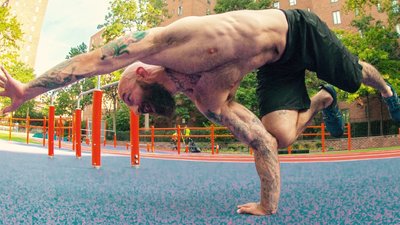Part of what makes bodyweight strength training so appealing is that it allows anyone to get strong without relying on weights, machines, gyms, or anything else they have to pay for, travel to, or wait in line to use. You can always work toward building muscle and improving your strength—even if you don't have a gym membership or any formal equipment—simply by employing your environment and your own body.
Calisthenics continues to catch on with new people every day, and not just because it's convenient. The popularity of bodyweight training is due in large part to its functionality. We all have a body that we must use to navigate our way through this world; the better you are at moving your body, the better you'll be at life.
Furthermore, most people find that the strength you build by moving your own body weight carries over toward other disciplines better than most other modalities of strength training.
With that in mind, here are four simple, effective ways that you can incorporate more bodyweight exercises into your routine, even without going to the gym. All four of these movements are great to "practice" for a few minutes whenever you have time. You don't even have to wear your workout clothes!
1. Hit The Bar
In recent years, the popularity of "Street Workout" style calisthenics has led to more and more fitness playgrounds popping up all over the world. With many cities now offering adult fitness parks where you can train for free, there are more opportunities than ever to get in your reps. Some of these parks are more high-tech than others, but you can almost always find a solid pull-up bar in a decent-sized city—and if not, a simple old-fashioned playground will usually have a bar or monkey bars that will work just fine.
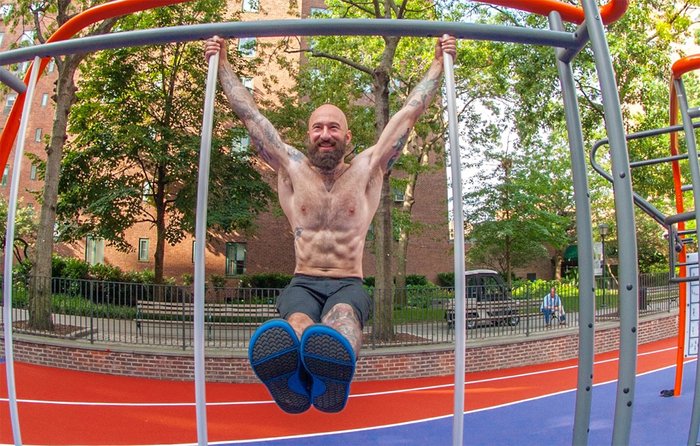
Practicing pull-ups and pull-up variations, along with hanging leg raises, can do a lot for building your body. I've been preaching the pull-up gospel for years and I don't mind saying it again: You don't need much more than a sturdy overhead bar to hang from in order to build a well-developed upper-body.
If you're looking for a sure-fire plan to increase your pull-up prowess, make sure you check out my 20 pull-up challenge.
2. Find Hollow-ed Ground
The hollow-body hold, which is a foundational staple of gymnastics training, is a fantastic isometric exercise that you can practice anytime, anywhere. In addition to being one of the best abdominal exercises out there, the hollow body is also a great way to learn or reinforce the full-body tension that is necessary to earn many high-level calisthenics feats, from the one-arm push-up to the front lever.
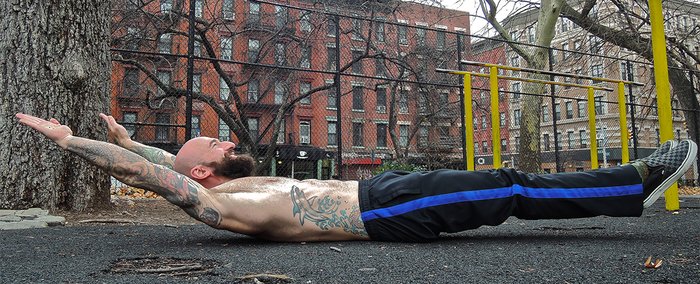
To perform a hollow-body hold, lie on the ground with your knees tucked and your arms overhead. Press your lower back into the floor to engage your abs, then carefully begin to extend your legs away from your body. The goal is to fully outstretch your legs without losing contact between the ground and your lower back, then hold that position for time.
If you aren't strong enough to do this yet, practice with your knees bent to the most obtuse angle you can manage without your lower back coming away from the floor.
3. Get Down and Squat
The classic bodyweight squat is an often overlooked gem of an exercise. Bodyweight squats are harder to perform than many people give them credit for, particularly if you're paying strict attention to alignment and utilizing a full range of motion.
Though it may seem contradictory, I've met some lifters who have a harder time doing a squat without any weight than with a barbell across their back. With no external load to stabilize them and push them deeper into the bottom position, many folks find the bodyweight squat to be a humbling challenge.
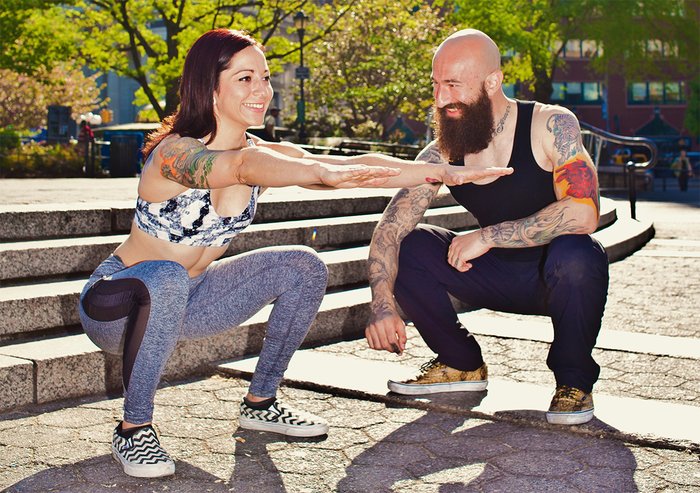
If you need help with the bodyweight squat, don't get down on yourself. It's easy to practice your squat no matter where you are, day or night. It doesn't have to be a "workout" to work! In fact, spending some time just holding the bottom position of a squat at a few points throughout the day is a fantastic way to improve your balance and mobility, which are often limiting factors for this exercise. And yes, it'll make you better at squatting!
For more detailed info, check out my guide to doing a full bodyweight squat.
4. Handstands Everywhere!
Popping into a quick handstand is a fun way to break up your day. It's also fantastic for building strength in your upper-body, as well as in your hands and fingers. It will also benefit your circulatory system by temporarily reversing your blood flow. It might help clear your mind just as well as that afternoon cup of coffee, and all you need to do a handstand is the floor beneath your feet and the gumption to go for it!
Most people will find the wall-assisted handstand a more approachable way to practice during the day—at least at first. There are two main ways you can approach getting into a wall-assisted handstand, but both only require a bit of wall space. Break room handstand, anyone?
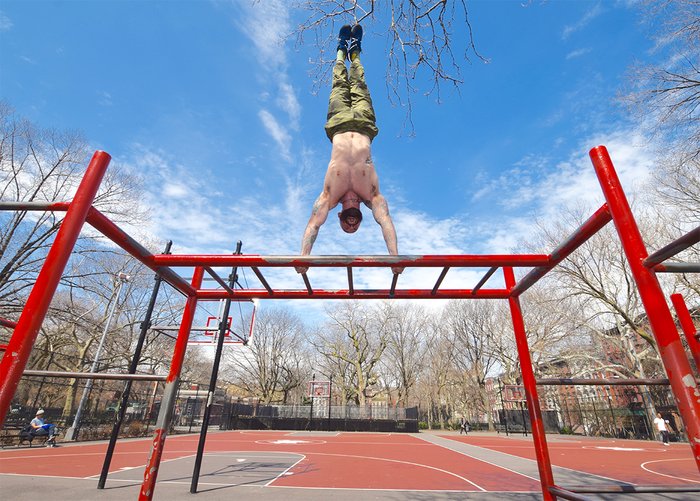
The first method is to kick up into position with your back facing the wall. To do this, start with your hands on the ground several inches from the wall, then bring one knee in toward your chest and keep the other leg straight behind you. From this position, kick your back leg up and push off with your front foot in order to propel yourself into an inverted position. Make sure to actively press your arms into the ground as you kick up in order to avoid crashing down. You may need to kick several times before you find the right amount of force required to get your hips over your hands.
You can also perform a handstand with your front facing the wall, which some people will find more accessible (though others may find more difficult). To do this, start in a push-up position with your feet against the wall, then carefully start walking your hands in closer to the wall as you walk your feet up, until you're upside-down with your hands about 6-8 inches from the wall.
With enough practice and patience, you can eventually learn to balance on your hands without relying on a wall for assistance. Once you cross this threshold, you can have even more fun practicing your handstands anywhere you find yourself!

